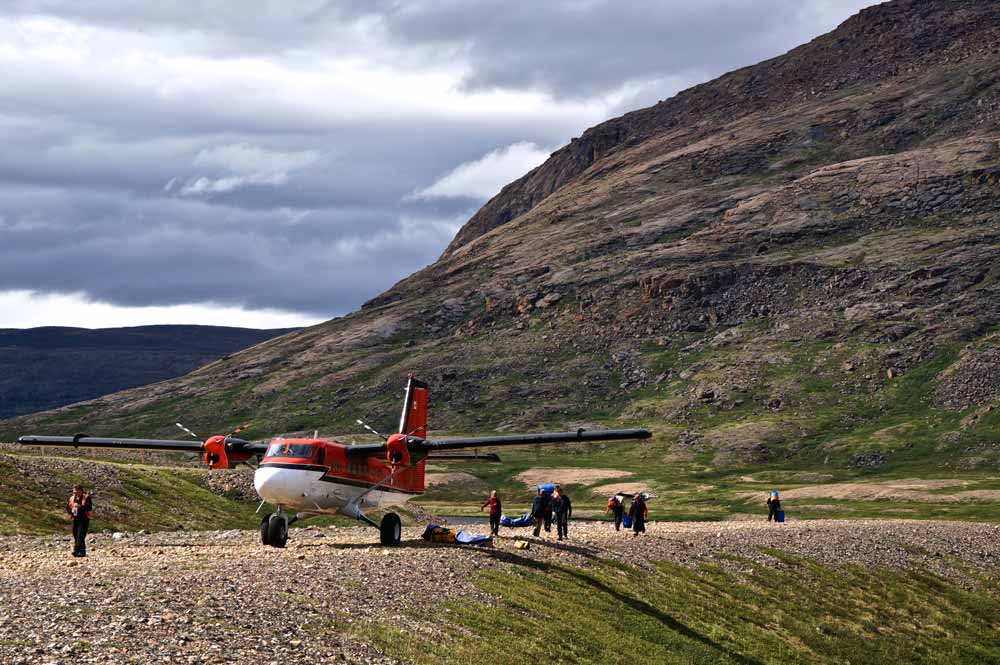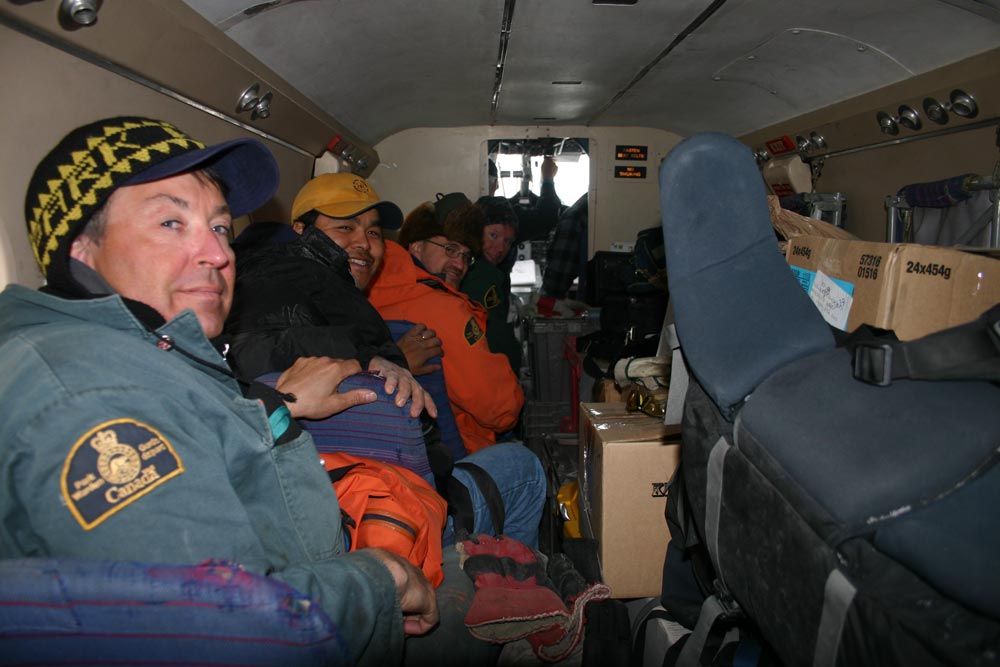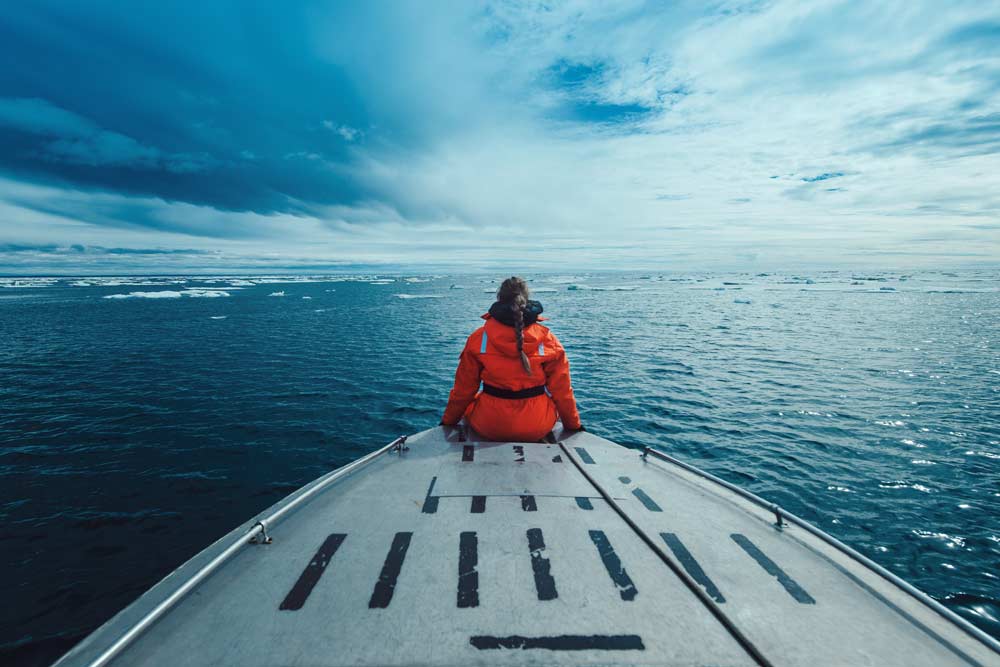Navigating The Beautiful North
Make the most of your time in Nunavut by getting around like a seasoned traveler.
From the rocky formations of Kimmirut to the fruitful waters of Cambridge Bay and everywhere in between, Nunavut is a vast and varied land. Choosing where to focus your visit can be an overwhelming – however exciting – challenge, but it’s only the first step. To get the most out of an arctic adventure, travelers must understand the unique complexities of getting to, and around, this beautiful and untamed territory.
The first thing to rule out is a road trip. While it’s technically possible to access the southernmost edge by car, there are simply no roads to Nunavut. Generally, the fastest and most economical way to get there is by air. Iqaluit, Cambridge Bay, and Rankin Inlet are the gateway communities by which the rest of Nunavut can be accessed, with flights arriving from airports in these Canadian cities:
- Ottawa, Ontario
- Montréal, Québec
- Winnipeg, Manitoba
- Churchill, Manitoba
- Edmonton, Alberta
- Yellowknife, Northwest Territories

Local airlines are the main transportation system for traveling between Nunavut’s 25 communities, as there are no roads that connect the different hamlets. In rare instances, boat or skidoo trips between some communities can be arranged, although these options aren’t likely to be efficient or readily available.
Flying from one spot to another may increase the budget of a trip significantly, but shrewd travelers can take advantage of cost-saving programs when booking flights to and within Nunavut. Outfitting and expedition companies that are partnered with Travel Nunavut (click here for a full list of partner organizations) offer flight discounts, so it’s prudent to speak to a guide or information counselor before purchasing plane tickets. For those who have been saving up, cashing in collected air travel points is one way to save on flights. Another option is Canadian North’s Arctic Air Pass program, which allows travelers to purchase coupons for flights in either the western or eastern region of Nunavut. Each coupon is good for one leg of the trip, allowing travelers to create a customized adventure between several communities, with relatively few scheduling restrictions and for a fraction of the cost of regular airfare.
Canadian North and Calm Air are the main airlines which serve travelers looking to explore the Arctic. Both First Air and Canadian North provide the utmost in sky-bound comfort: ample legroom, hot meals, complimentary wine and coffees, and warm hand towels will ensure your flight is a most enjoyable first step on your journey. Calm Air, which mainly serves the Kivalliq region (the territory west of the Hudson Bay), provides efficient and comfortable flights, with seating designated on a first-come, first-served basis upon boarding the plane.

After the process of getting into Nunavut is complete, traveling within the communities themselves is relatively simple.
Many are small hamlets, only a few streets wide, making “two feet and a heartbeat” the most practical mode of transportation. Since all travelers should have arrived in town with weather-appropriate clothing, even cold winter temperatures will pose no problems for a brisk walk across the community.
Exploring by foot allows intrepid travelers to drink in the scenery, chance upon interesting businesses and landmarks, and to meet and engage with locals. Indeed, new faces in any community are always warmly greeted by friendly and inquisitive youths. Escorted by newfound acquaintances, you’ll likely never lack company as you wander Nunavut’s streets. If unsure about local happenings or looking for a community-related event to attend, local visitor centres and cultural centres are great resources for information on nearby activities.
While taxi service is available in some centres, in smaller communities it is mainly used for transportation to and from the airport. Taxi fares are generally charged as a flat rate, per person and per ride, and with young children riding free; riders also shouldn’t be surprised if the driver stops partway through the journey to pick up another passenger. Other popular modes of travel
are quads (universally referred to as ‘Hondas’ in the North) and snowmobiles (also known as skidoos), and tours can often be arranged through local outfitters. Those looking for the classic dogsled experience should set their sights beyond the city limits – dogsleds aren’t typically used
for travel within communities.

Travelers with a slightly higher budget may want to consider a cruise as their main mode of traversing the arctic.
Many companies not only provide cozy accommodations and spectacular sights, but offer programming to enrich and enhance your Northern adventure. The Canadian-owned Adventure Canada is known for incorporating authentic Inuit cultural experiences, and featuring top-tier featured guests such as Margaret Atwood, David Suzuki, and Inuit celebrity Johnny Issaluk. Those with an affinity for all things scientific and environmental will appreciate the enlightenment offered by One Ocean Expeditions, with a focus on nature and conservation led by in-house scientists and animal experts. For a full list of cruise companies, click here.
While some destinations are made for aimlessly wandering, Nunavut is not one of these.
When planning a once-in-a-lifetime trip to the Arctic, it’s best to have plan for a multitude of possibilities, while paying close attention to changes in the forecast. The weather can turn quickly from favourable to dangerous, and even the most experienced guides won’t attempt a trek when the elements are not on their side.
There are many helpful resources available to travelers considering a trip to Nunavut. Information counsellors, travel agents, and proprietors of outfitting and excursion companies are happy to speak to travelers, answer questions, and help to create an exciting itinerary. Learning about the intricacies of Northern travel may seem complex, but it’s worth taking the time to get it right. After all, nothing worthwhile – like a potentially life-changing trip to the breathtaking Canadian Arctic – comes without a bit of adventure.
